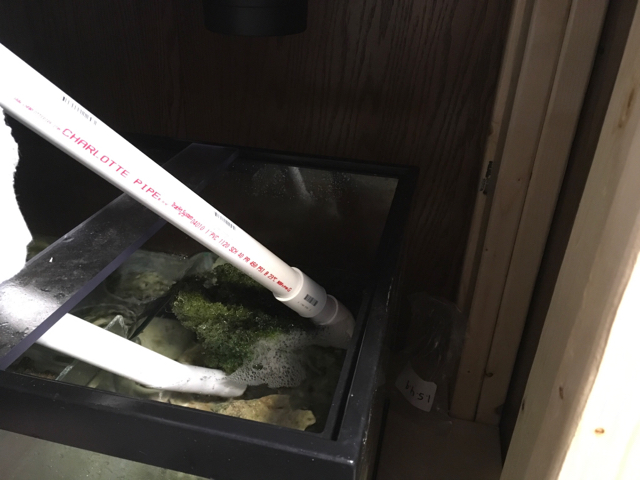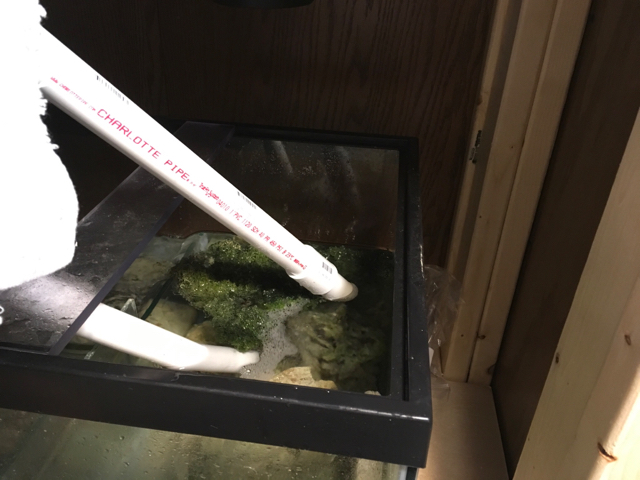Hello everyone, this is my first post here on RC but i've been reading for a while silently

I wanted to share my project and maybe have some advice about the setup since i have time to change if i made errors or missunderstood how a bean animal works.
Here are the render on how it should be (pardon my poor skills)
(here is a link for the front view, don't want to post images that are not really relevant i think
https://i.imgur.com/xyyoZNs.png)
So, the 4 red marked pvc joints are going to be on the other side of the glass, so everything will be dropped down few cm (sorry, metric system here in Italy).
- the third pipe is going to be the syphon and will be as close as possible to the bottom of the box.. that is what i understood, to avoid that something could go sucked in (it will anyway, i know)
- the second pipe is the open channel (it's not drilled on top for the vent, this is still a mockup), the vertical pipe marked with the arrow can be adjusted in height as needed.
- the fourth pipe is the emergency, has to be cut down to size, nothing is glued for now.
- the first is the return pipe from the pump, has nothing to do with the rest.
The box is going to be mounted on a rimless tank and siliconed flush on top, the box is not a full coast to coast design since i need extra space on the side, the total height is 18 cm (7") and it's 42 cm wide (16").. the weir is 4cm from the top oh the glass (1.5") and as i understand the waterfall in the box should not be more than 1" (2.5 cm), i think it should be ok like this.
So how should i proceed now? Drill the holes on the bottom of the box and silicone all in place, then fix the syphon in place as it is now and use the valve to adjust the flow right? The height of the emergency should be cut 1" (2.5cm) from the top of the glass, that is not a big deal, but how can i set the height of the open channel?
The valve on the syphon is what is going to set the water height in the box? so the open channel could be cut in relation of this height, or not? I saw some drawnings here way back 100 pages, but some say to leave them on the same height.
Thanks and sorry for my english.






